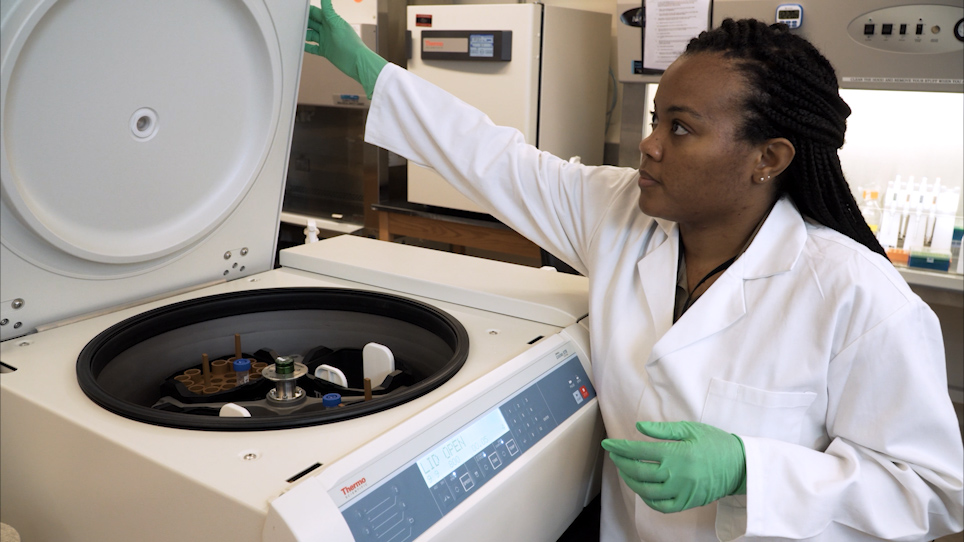Measuring Alloreactivity in a Mixed Population of T Cells
Transcript
Begin by seeding 0.5 times 10 to the sixth dendritic cells into each well of a 96-well cell culture plate, followed by 1 times 10 to the sixth T cells in a final volume of up to 50 microliters total of culture medium per well. Incubate the cold cultures for four hours at 37 degrees Celsius and 5% carbon dioxide.
Then, add three times the culture volume of 1.5% formaldehyde in PBS to each well for 30 minutes at room temperature. At the end of the fixation, transfer the cells from each well into a corresponding 5-milliliter polystyrene tube, and stain in the cells with the appropriate fluorochrome-conjugated antibodies in 100 microliters of wash buffer for 30 minutes at room temperature, protected from light.
Next, wash the cells in 1 milliliter of wash buffer and resuspend the pellets in perm wash buffer containing phalloidin-FITC. After another 30 minutes at room temperature protected from light, wash the cells in 1 milliliter of fresh perm wash buffer. Resuspend the pellets in the nuclear dye of interest in perm wash buffer for a final 30-minute incubation at room temperature protected from light, and wash the cells in 1 milliliter of perm wash buffer, followed by one wash in wash buffer alone. Then, resuspend the cells in 50 to 100 microliters of fresh wash buffer, and transfer the cells into small-capped microcentrifuge tubes.
To analyze the cell-to-cell interactions, first, reserve one channel for brightfield image acquisition, and load the first control tube. With the brightfield channel turned off, in the Workspace window, create a new scatterplot for each channel used with the aspect ratio over the area, and gate the singlets where the aspect ratio is close to one.
For each fluorochrome, check the positive population, and adjust the laser voltage in the illumination box as necessary. In the Channels box, select the appropriate channels for the fluorochromes used in the staining. Then, click Record. When the number of events reaches the specified threshold, the acquisition will stop automatically.
After all of the single stain controls have been acquired, load the first experimental sample tube, and acquire several tens of thousands of events under the appropriate analysis channels, including the brightfield channel.



